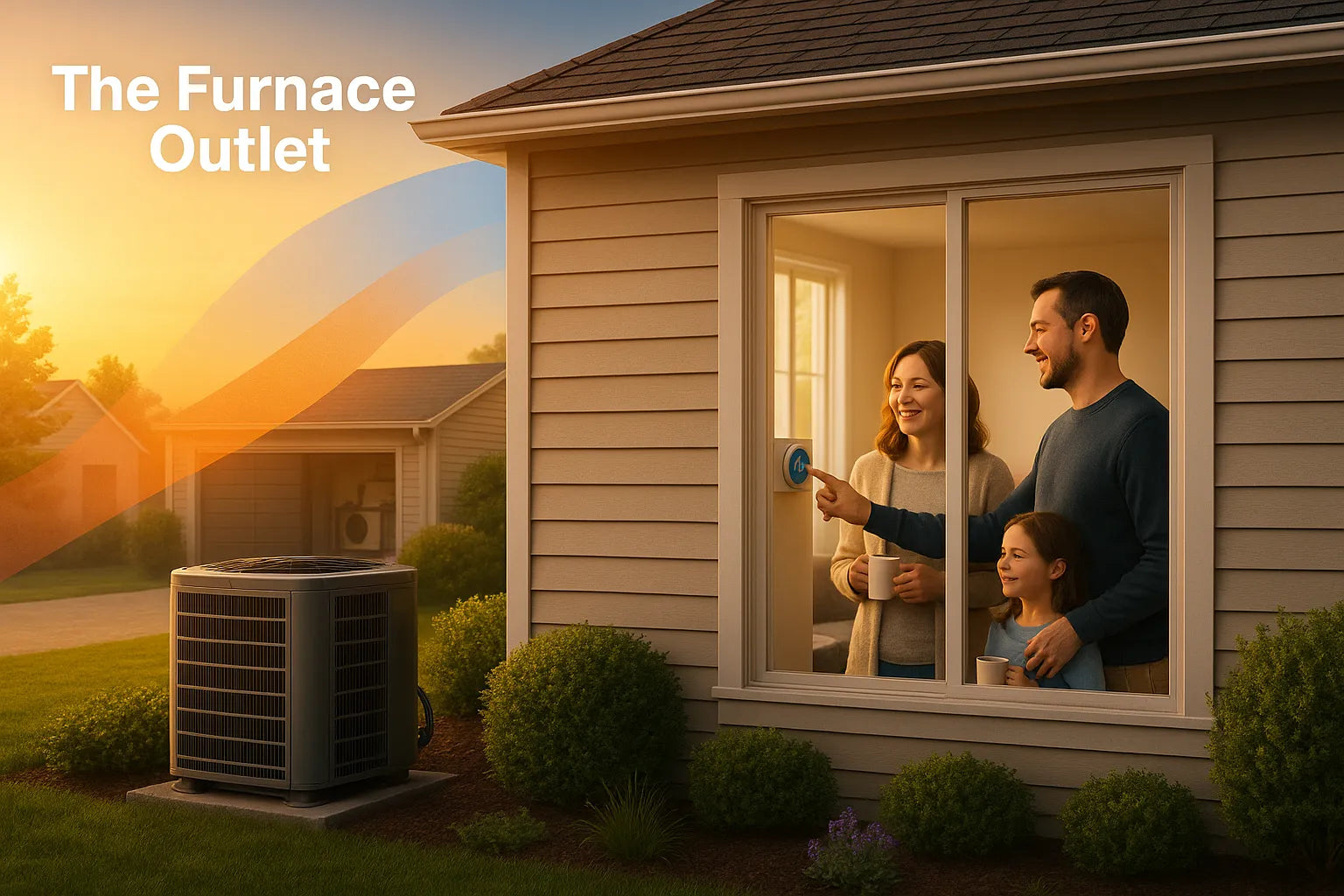A Chilly Morning Surprise: Why DIY Matters
The alarm rings at 6 AM, but the house feels like a walk‑in freezer. You tap the thermostat, yet nothing happens. Panic rises, until you remember that many furnace hiccups need only minutes and a screwdriver. Learning a few safe checks can keep your family warm, reduce repair bills, and extend the life of your system.
Check the Filter First: Clear the Airflow
A clogged filter is the villain behind weak airflow, short cycling, and overheating. Action steps:
-
Cut power at the switch.
-
Slide the filter out; hold it up to the light.
-
If you can’t see light, replace it
Swap filters every 30–90 days, or more frequently if you have pets or are undergoing renovations. Fresh filters boost efficiency by up to 15% and protect the blower motor, a savings you’ll feel on your gas bill.
Need replacements? Browse our high-MERV filter lineup in the accessories section to take advantage of wholesale pricing and enjoy fast, free shipping. For deeper guidance, our licensed techs break it down in the Help Center if questions arise.
Power Up: Resetting Breakers and Switches
No lights on the furnace control board? Head to the electrical panel. A tripped breaker often hides behind holiday‑decor overload. Flip it fully OFF, then ON. Next, verify the furnace’s own service switch—usually mounted on the side of the cabinet—is up. Still dark? Test the outlet with a lamp to rule out a dead circuit. Safety note:
If breakers trip again immediately, call a professional. Repeated trips hint at deeper electrical issues, warns the U.S. Department of Energy.
Thermostat Trouble: Small Device, Big Impact
A thermostat stuck on “Cool” keeps your furnace silent. Confirm it’s set to “Heat,” bump the setpoint five degrees above room temperature, and wait a minute. Replace batteries each heating season. Dust bunny invasion? Gently blow compressed air inside older mechanical models. Keep the thermostat away from lamps, TVs, or drafty windows to prevent false readings, a tip echoed by the ASHRAE comfort guidelines. Considering an upgrade?
Relighting the Pilot the Safe Way
If your older furnace has a standing pilot, a gust can snuff it out. Turn the gas valve to the OFF position and wait for five minutes. Switch to PILOT, press the reset, and hold a long match to the pilot port. Once the flame steadies, release and turn to ON. Still flickering? A dirty thermocouple or a failing gas valve requires expert attention. Never force parts or bypass safeties—gas leaks risk carbon monoxide poisoning, the EPA cautions. We’d rather sell you a $10 thermocouple than a whole furnace—that’s honest advice.
Open Every Vent: The Hidden Airflow Fix
Blocked or closed supply and return vents restrict airflow and increase duct pressure, causing the blower motor to overwork. Walk room‑to‑room. Straighten rugs, pull sofas off registers, and open dampers. Balanced airflow helps maintain even temperatures and prevents short cycling.
Stop Short Cycling Before It Wears Out Parts
Short cycling—rapid on/off bursts—often results from dirty filters, misplaced thermostats, or closed vents. First, do the easy fixes covered above. Still happening? Inspect the flame sensor: a quick polish with fine emery cloth can restore steady burns. Persistent cycling may indicate an oversized furnace; our Lowest Price Guarantee lets you swap to the right‑sized model without wallet pain. For sizing help, our DIY calculators are available in the Help Center.
Tackle Water Leaks in Condensing Furnaces
High‑efficiency furnaces create condensate. A clogged drain line can leave a puddle that you might mistake for a plumbing leak.
DIY steps:
-
Turn off the power.
-
Detach the vinyl drain tube.
Flush with warm water and a splash of vinegar.
A clear tube restores proper drainage. If water still pools, the internal trap or secondary heat exchanger may crack. That’s time for a tech. Learn more in the return policy that keeps you covered if major parts fail early.
Silence the Rattle: Dealing with Strange Noises
Rattles usually mean loose panels. Tighten sheet‑metal screws with a nut driver. Screeches? Inspect the blower belt for frays. A new belt costs less than a pizza and prevents motor damage. Bangs at startup may signal delayed ignition; shut the gas off and call a pro immediately—unburned gas is dangerous. Keep a simple noise log like the one below to help techs diagnose:
|
Sound |
Likely Cause |
DIY Fix? |
|
Rattle |
Loose panel |
Yes |
|
Squeal |
Worn belt |
Yes |
|
Bang |
Delayed ignition |
No |
For replacement belts or motor kits, explore our furnace parts aisle for wholesale deals.
When to Call a Licensed Pro
DIY ends where safety begins. Contact an HVAC technician if:
-
You smell rotten eggs—leave and call the gas company.
-
Breakers trip twice after resets.
-
The pilot or electronic igniter fails repeatedly.
-
You hear loud bangs after fixing airflow issues.
-
Water keeps pooling after the drains are cleared.
Professionals carry combustion analyzers that verify safe carbon monoxide levels, as recommended by Consumer Reports. When ready,
Preventive Maintenance: Make Next Winter Easy
A yearly tune‑up includes cleaning burners, adjusting gas pressure, and checking the heat exchanger for cracks. These steps catch failures before they become 2 AM emergencies—plus they keep warranties valid—by scheduling maintenance in late summer when techs are less busy and rates are lower. Pair the visit with a fresh filter and thermostat battery swap. The Energy Saver program states that proper upkeep can reduce heating costs by up to 30%. That’s bigger than any coupon.
Still having furnace issues? Find parts, filters, and expert help at The Furnace Outlet—fast shipping, real savings.







